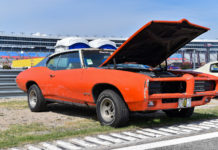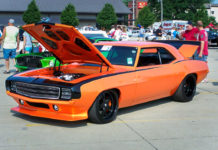The 1st step in picking out what kind of Hot Rod to build is to attend as many car shows as possible, this will help you decide the style of car you’d like to build. There are several different types of shows, there are shows that are for Rat Rods, Traditional Hot Rods, Lead Sleds, Classic & Muscle Cars, and High End Street Rods.
It would be great if we never needed a budget for our projects, but in the real world, a budget is always a deciding factor in our builds. The other factor is time, both of which need to work together rather than against each other.
In deciding what type of Hot Rod to build ALWAYS build what you can afford, while most of us would love to build the finest Hot Rod in the world. Sometimes we have to compromise, but this doesn’t mean that you have to give up or settle on what you want.
It just means that you’ll need to work smarter. Doing a lot of the “grunt” work yourself rather than paying to have someone do it. This will free up the funds to be able to get things that normally wouldn’t have been in the budget. This will ensure that you will have enough money to finish your project. The worst thing that can happen is to run out of money for your build.
That means the project has to sit until you raise more money to continue the build, and the longer it sits, the more likely of the possibility that you’ll lose interest and end up selling it, and you’ll be bitter for all the time and money that you felt was wasted.
The best way to a successful build is to always make progress every time you work on it. Many times you may feel like nothing is getting done, but then one day you see tons of accomplishment that seem to have happened overnight.
While there are always differences in opinions of what the “perfect” Hot Rod is, ALWAYS build your Hot Rod the way YOU want to build it. Before you decide on a Hot Rod to build you will want to look at the availability of parts for your build, common parts are always cheaper and more available than rare one of a kind parts.
This always comes into play especially if you have a smaller budget or are planning to drive your Hot Rod a lot of miles each year. Of course in going on a road trip of any length at all, you’ll always want to have some spare parts and a small tool box with you. That way you’ll be able to make it home from any road trips, and not have to worry about a big tow bill to get your ride home.
RAT RODS
The 1st style I’ll cover is the Rat Rod, these are the absolutely cheapest projects to build, they are comprised of used parts from many different vehicles and sources. Many use parts that come from auctions, salvage yards, scrap piles, farms, and fields.
They are almost always unpainted, with unfinished welds and body work, and have nothing in the way of comfort, and most have virtually no new parts, no paint, a rusty appearance, and rarely any chrome.
While most Rat Rod builders will not sacrifice safety, we all have seen the ones that are really too unsafe to be on a public road. PLEASE NEVER, EVER, do that, if you’re one of those people, then you have no business building anything.
Many of the Rat Rods have a style that includes a vast array of parts and pieces, many started life not even in the automotive world. Many of these items were never intended to work together, and this makes for some very unique builds that have a character all their own. The only limit to building a Rat Rod is your imagination, and believe me
there are some very wild imaginations out there.
The term “Rat Rod” doesn’t always have to apply to cars or trucks. I saw this Rat Rod at a show in Seward, Nebraska, it’s a back half of a motorcycle welded to the front frame clip of a car. It’s a very unique vehicle and would be interesting to ride for sure.
TRADITIONAL HOT RODS
Traditional Hot Rods are a throw back to the glory days when our soldiers were just returning home from the war and used the skills they learned in the military to satisfy their need for speed.
These cars usually involved engine swaps to bigger more powerful engines, many of the extra weight like hoods, fenders, running boards etc. were removed to make them faster.
The lack of performance parts made it necessary to improvise and make modifications to their existing parts, and often times they searched for more power in swapping out parts from other manufacturers. Those skills developed into the beginning of the high performance industry that we know today.
These cars generally have nice paint and good interiors, although some do have primer where body work is being done. Unlike Rat Rods, these cars are more finished looking, and more performance oriented and was usually driven to work during the week and many times raced on the weekend often at the local drag strips or even the dry lake beds.
These are really fun cars to drive and can be driven many miles comfortably, and are a mainstay of many car shows and events. Many of these cars are race inspired, and many of them have multiple carburetors, headers, hi-performance camshafts, updated transmissions, rear end gears, brakes, and are much safer than when originally produced.
These cars can be built very reasonably and will provide a lot of bang for the buck, and
years of reliable enjoyment. These are one of my favorite types of cars due to the simplicity and ease of construction.
On Part II of this series The Basics Of Getting Into The Automotive Hobby we will be discussing Classic Cars and High End Street Rods.














